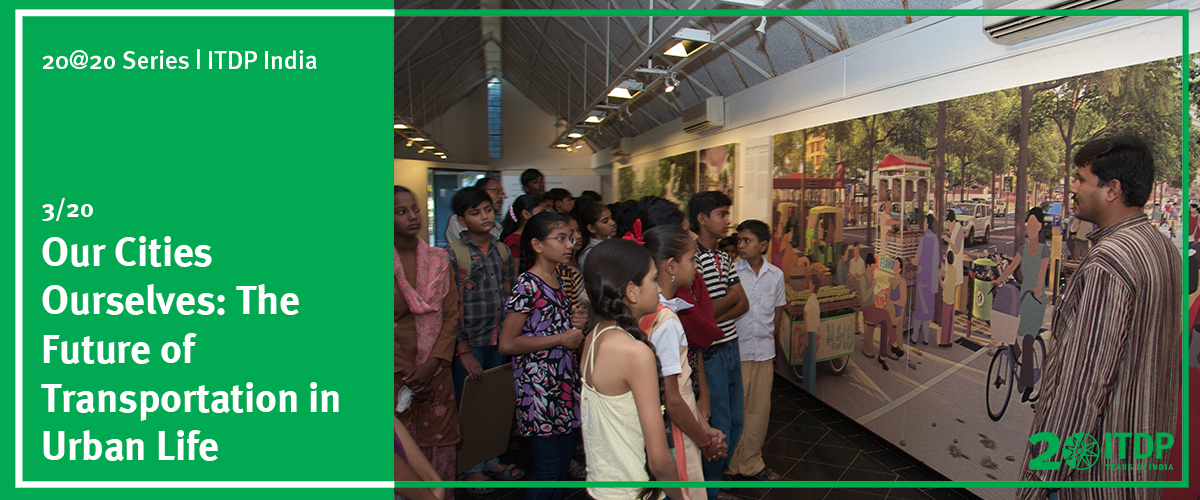Over the past decade, cities across India have dared to dream of reimagining bus transit, most famously known as the Bus-Rapid-Transit, or the BRT. The concept of having buses ply in the centre of the road, on dedicated bus-only lanes, has gradually mulled into our urban transport systems with a tenacious aim of mobilizing people rather than cars.
India’s first high-quality bus-rapid-transit system was inaugurated in 2009 in Ahmedabad — the Janmarg bus-rapid-transit. Janmarg set a national benchmark and inspired systems across India, including the Rainbow bus-rapid-transit in the twin cities of Pune and Pimpri-Chinchwad that was launched in 2015.
The Rainbow bus-rapid-transit offers convenient commute, as efficient as a metro or a train without the cost of acquiring land, laying tracks, building large scale stations, and the pedestrian foot-over-bridge to get to them. The ITDP India Programme assisted Pune Municipal Corporation, Pimpri-Chinchwad Municipal Corporation, and Pune Mahanagar Parivahan Mahamandal Limited create physical designs and operational plans for the system.

Today, the Rainbow operates along a 43 km network of bus-only lanes, with 58 stations along four corridors. However, this was Pune’s second attempt at perfecting a system that would help address the pressing issue of transport needs for the influx of population. Back in 2006, Pune piloted a 13 km bus-rapid-transit corridor but failed to meet BRT Standards.

A good bus-rapid-transit system requires dedicated bus-only-lanes, high quality bus fleet at regular frequency, a matching height of the station and bus fleet for easy step-less passenger boarding, off-board fare collection, and adequate passenger information for seamless travel. Unfortunately, the pilot bus-rapid-transit was short of meeting these basic standards.
The initial set back was not detrimental to the city regaining momentum to construct a successful bus-rapid-transit. Learning from this experience, and from the systems later commissioned in India and around the world, leaders were determined to get Rainbow right.
The Rainbow bus-rapid-transit was faced with a challenge of retrofitting a high-quality system on an existing bus network. The ITDP India programme assisted with route rationalization to deliver frequent service and ensure efficiency of the system’s fleet.
Soon after it’s launch, Rainbow was awarded the ‘Outstanding Contribution to Sustainable Mobility’ at the Volvo Sustainable Mobility Awards 2015. The award was attributed to it’s efficiency of mobilizing thousands of commuters, and travel time savings. Dedicated bus lanes ensured that commuters reach their destinations 10 to 15 minutes earlier than usual.

Rainbow bus-rapid-transit started off well but has failed to achieve its full potential. Ridership has only increased by 12-17 percent over the three years while the number of personal motor vehicles on the road has been growing unabated due to infrequency of buses. Considered a first for any urban area in India, Pune’s total number of vehicles has surpassed the human population!
Lack of cleanliness of stations areas attributed to the public’s demeaning perception of the system. Walking and cycling access to bus-rapid-transit stations is the dire need of the hour but yet to be developed along most corridors.
In an era where financial resources are sparse but population growth is inevitable, large-scale public transport systems are difficult to conceive. An expansion of the the Rainbow system is being planned for an additional 45 km network. This is because the twin cities strongly believe that the Rainbow can provide a solid backbone to the urban transit system.
A major limitation to the bus-rapid-transit system is also the stigma that comes with being a ‘bus’. This can be addressed through better system design, well-maintained stations, and most importantly bus-only lanes to make the users feel like it worth leaving the car back at home.
Finally, for the success of any bus-rapid-transit system it is essential to periodically assess the infrastructure and operations of each corridor, and set benchmarks to ensures its longevity. Pune and Pimpri-Chinchwad can aim for a ‘Rainbow’ future, learn from its shortfalls, and get back on the wheel to move its citizens.
















 The journey on the Janmarg is much quicker because the BRT enjoys centre-aligned, bus-only lanes
The journey on the Janmarg is much quicker because the BRT enjoys centre-aligned, bus-only lanes








